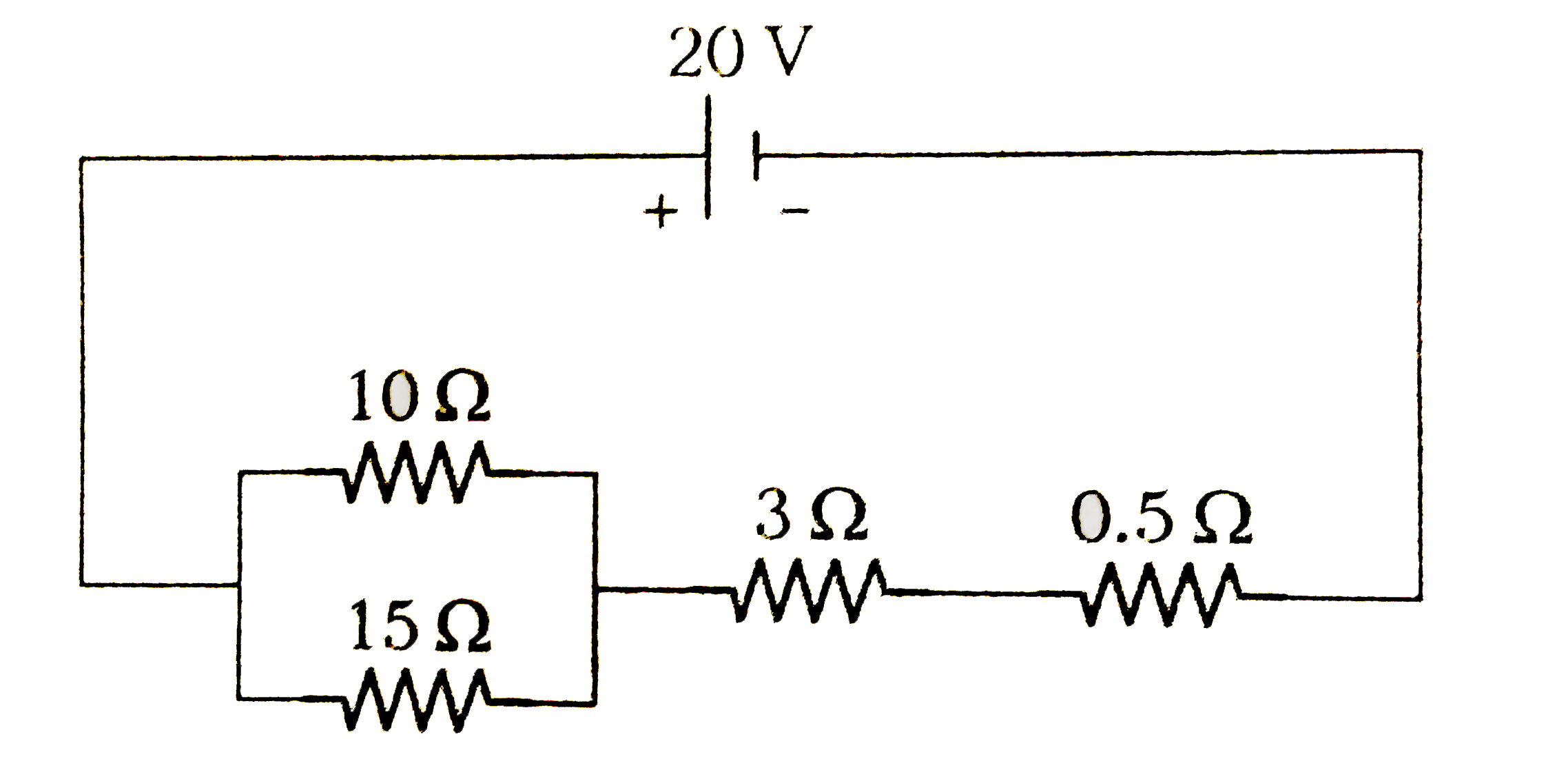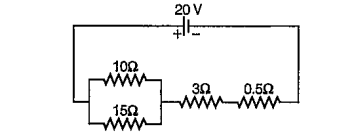The resistance of iron wire is 10Ω and α=5×10−3.∘C. If a current of 30A is flowing in it at 20∘C keeping the potential difference across its length constant, if the temperature is incresed to 120∘C what is the current flowing through that wire?
=R120−R20R20(120−20),5×10−3=R120−1010×100
∴R120=15Ω, But V=IR
Here V is constant, Hence.
I120I20=R20R120,I12030=1015,∴I120=20A
Similar Questions
The resistance of an Carbon wire is 10Ω current of 30mA is flowing in it at 20∘C .If p.d across its ends constant then its temperature is increased to 120∘C then the current flowing in the wire will be in mA (αc=5×10−3^(∘C)
View SolutionIf a current of 3 A flows through a wire of resistance 8 ohms, calculate the potential difference applied across its ends.
View Solution
Knowledge Check
The resistance of a wire of iron is 10ohm and temperature coefficient of resistivity is 5×10−3/.∘C, At 20∘C it carries 30mA of current. Keeping constant potential difference between its ends. The temperature of the wire is raised to 120∘C. The current in mA that flows in the wire now is.
A20B15C10D40In the circuit, the current flowing through 10Ω resistance is
 A12AB1.2AC0.8AD0.4A
A12AB1.2AC0.8AD0.4AA current of (2.5±0.05) A flows through a wire and develops a potential difference of (10±0.1) volt. Resistance of th wire in ohm, is
A4±0.12B4±0.04C4±0.08D4±0.02
In the circuit, the current flowing through 10Ω resistance

View SolutionThe potential difference across the terminals of a cell is 1.5 volt.It is connected with a resistance of 30ohms. Calculate the current flowing through the circuit.
View SolutionA potential difference of 20 volts is applied across the ends of a resistance of 5 ohms. What current will flow in the resistance?
View SolutionA current of 5 amperes flows through a wire whose ends are at a potential difference of 3 volts. Calculate the resistance of the wire.
View SolutionA current of (2.5±0.05) A flows through a wire and develops a potential difference of (10±0.1) volt. Resistance of the wire in ohm, is
View Solution